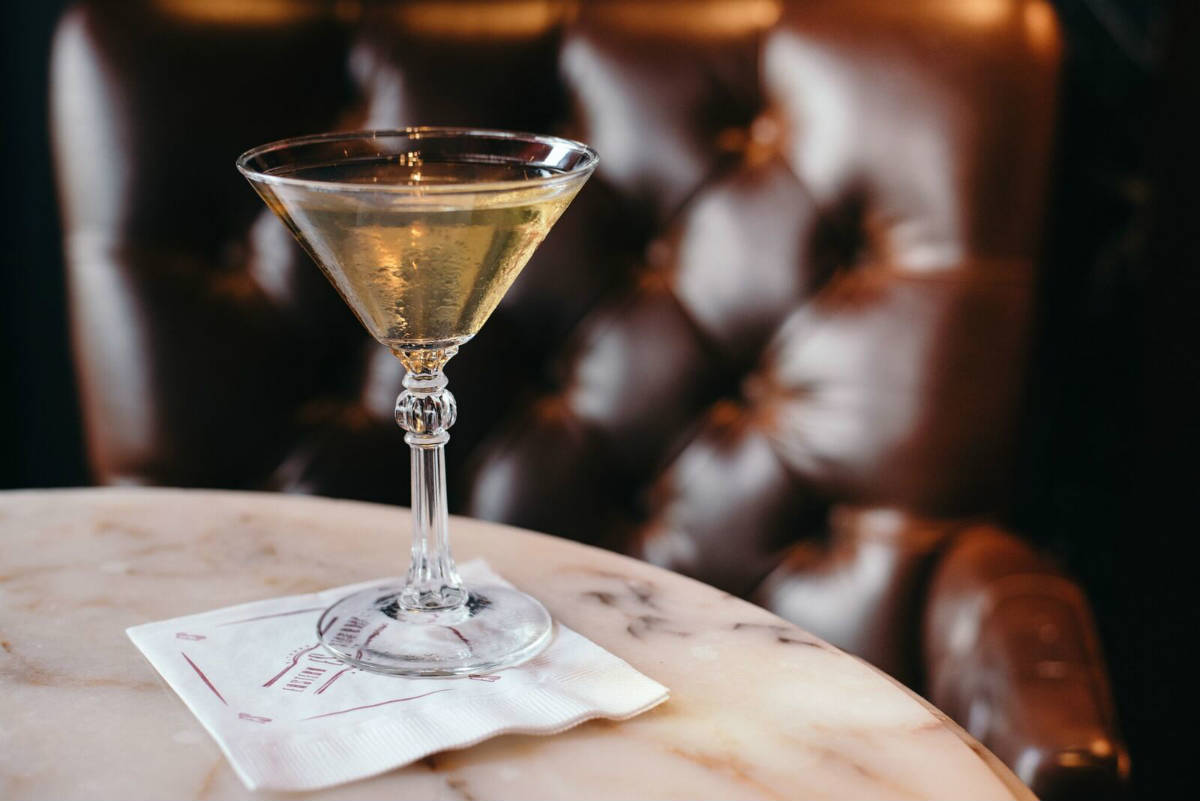There’s a unique stage in a cocktail’s progression, when it’s far outlasted a menu but isn’t quite immortalized as a genuine classic in the pages of a recipe book. It might not yet be a household name, but in the microcosm of its home bar—and for those in the know—it’s a legend. In this state, it could be best described as a “modern classic.”
We set out with a thirst to find the recipes and stories behind the modern classics that populate Boston’s bar scene today. And we came away with seven drinks that represent some of the most important cocktails currently being poured in town.
First up, we’ll take a look at the Heather in Queue, (pictured above).
Heather in Queue, Eastern Standard (Circa 2007)
As the story goes, one Friday night a regular named Heather was in queue for a cocktail at Eastern Standard. She requested a Hoskins, an arcane cocktail that called for gin, maraschino, Cointreau, and a bitter, orange-flavored French apéritif called Amer Picon.
Eastern Standard’s staff, renowned for their hospitality, faced a problem: Amer Picon hasn’t been sold in the United States for years. Thinking on his feet, beverage director Jackson Cannon created an alternate with gin, vermouth, a French liqueur named Bauchant, and a trace amount of Fernet-Branca. This substitute cocktail soon found a following of its own, making its way onto the menu and beyond.
“It hasn’t been on the menu for a long time, but it gets asked for more than anyone expected,” says Jared Sadoian, who serves as Eastern Standard’s assistant beverage director and is bar manager of its sister establishment, The Hawthorne.
Much of its distinct flavor comes from the use of Fernet-Branca and Bauchant. Sadoian describes Bauchant as being similar to Grand Marnier, but darker and more complex.
“It’s a great cocktail for someone who likes full-flavored Martinis,” says Sadoian. “If you have a Gin Martini drinker, they’ll happily dig themselves into this. It has a little more sweetness and just a touch of bitterness to balance it out.”
Heather in Queue Recipe
1.5 oz Beefeater or Tanqueray Gin
0.75 oz Martini & Rossi Bianco Vermouth
0.5 oz Bauchant Orange Liqueur
1 barspoon Fernet-Branca
Add all ingredients to a cocktail tin and stir with ice until chilled. Strain into a stemmed cocktail glass. Garnish with a flamed lemon twist.
Maximilian Affair, Drink, (Circa 2007)
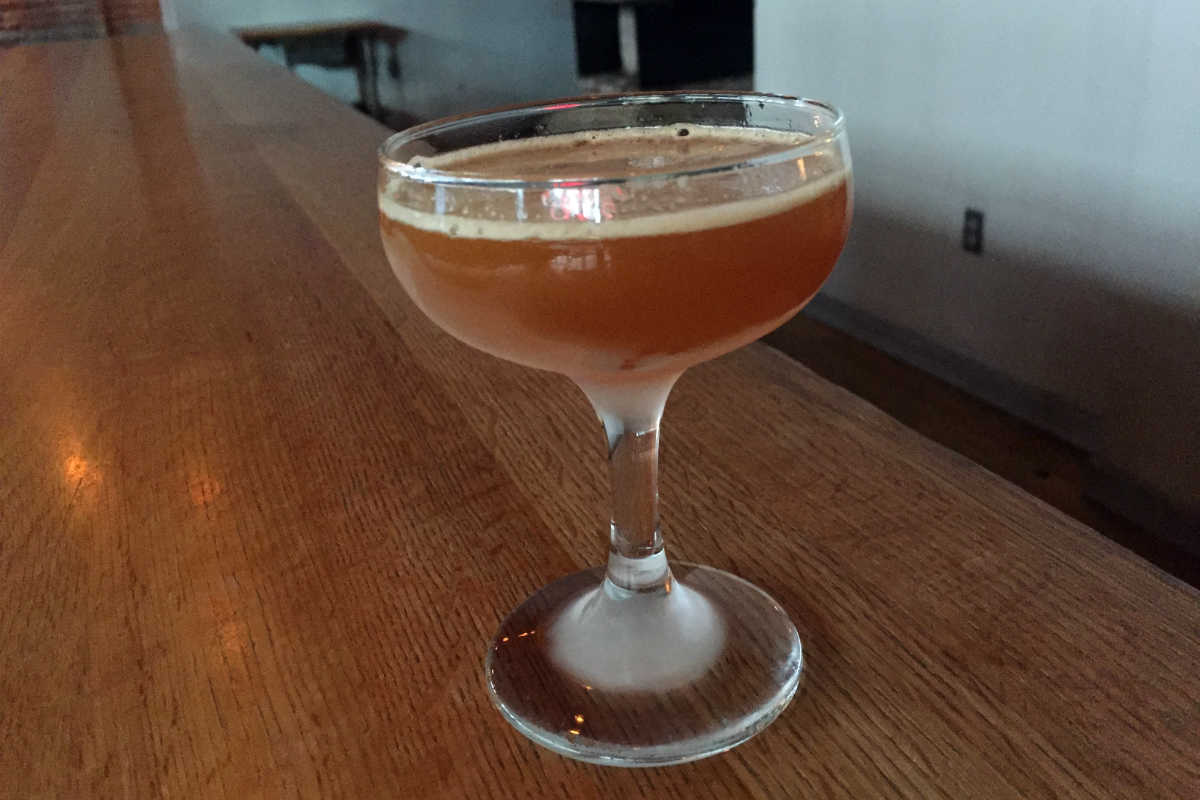
The Maximilian Affair takes its name from Maximilian I, an Austrian Archduke who was crowned emperor of Mexico in the mid-nineteenth century (it’s a long story). This cocktail has enjoyed a much warmer reception than its ill-fated namesake: its reign at Drink has lasted more than twice as long as Maximilian’s over Mexico.
The fanciful name doesn’t come at random. It’s a spirited agave drink, prepared with either tequila or mezcal. It was first conceived by Drink bartender Misty Kalkofen at a time when mezcal was just starting to penetrate bars.
Drink relies on a “bartender’s choice” system rather than a printed menu. However, the Maximilian Affair is often asked for by name. Drink general manager Ezra Star cites it as one of the reasons she works there.
“Somebody made it for me, and I was completely blown away,” says Star. “I didn’t know what the ingredients were or how it tasted—it doesn’t taste like what it’s made out of. It’s got that bitterness that you think is grapefruit, but it’s actually lemon.”
Maximilian Affair Recipe
1 oz tequila or mezcal
1 oz St-Germain
0.5 oz Punt e Mes
0.5 oz lemon juice
Add all ingredients to a cocktail shaker with ice, and shake until chilled. Strain into a chilled coupe or cocktail glass.
Shaddock, Trina’s Starlite Lounge (Circa 2009)
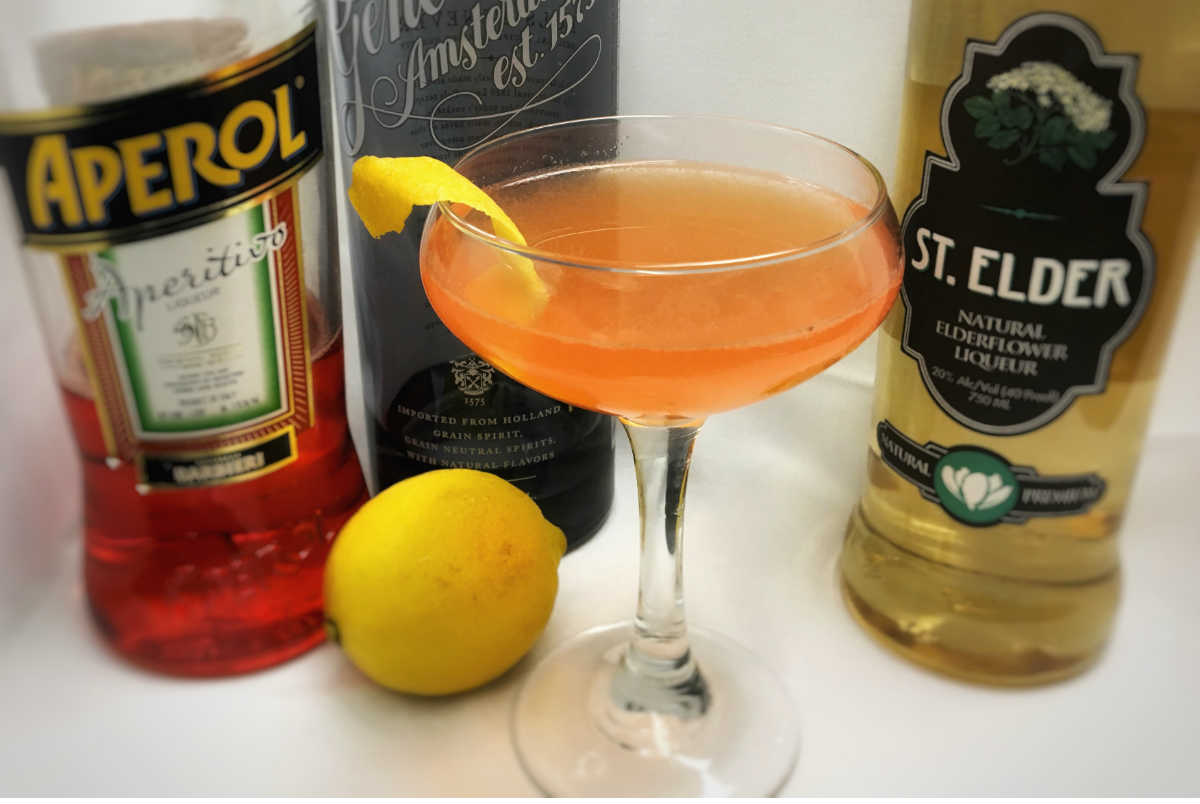
Josh Childs, co-owner of Trina’s Starlite Lounge, describes the Shaddock as “a simple drink that’s stood the test of time.” Childs first conceived of the cocktail in 2006, while experimenting with then-new St-Germain. He found what he was looking for with equal proportions gin, lemon juice, St-Germain and Aperol.
The resulting drink had a flavor that reminded Childs of ruby red grapefruit. This inspired some internet research on the fruit, and Childs came across one Captain Shaddock of the East India Company. Shaddock was credited with bringing pomelos—the precursor to the grapefruit—to the Western Hemisphere, and Childs named the drink in his honor.
This original gin version of the Shaddock was first served in 2006 at Silvertone, a bar Childs co-owned up until 2016. A tweaked version of the drink made with Bols Genever went on the menu at Trina’s Starlite Lounge in 2009, where it continues to be served.
Over the years it’s made appearances at other area bars where Childs is a partner, such as Audubon Circle and The Paddle Inn. Childs has also seen it made large-format and served as a punch, with a little assist from sparkling wine.
Shaddock Recipe
0.75 oz Bols Genever or Beefeater Gin
0.75 oz elderflower liqueur
0.75 oz Aperol
0.75 oz lemon juice
Add all ingredients to a cocktail shaker with ice and shake until chilled. Strain into a coupe or Martini glass and serve.
21 Temple, JM Curley (2011)
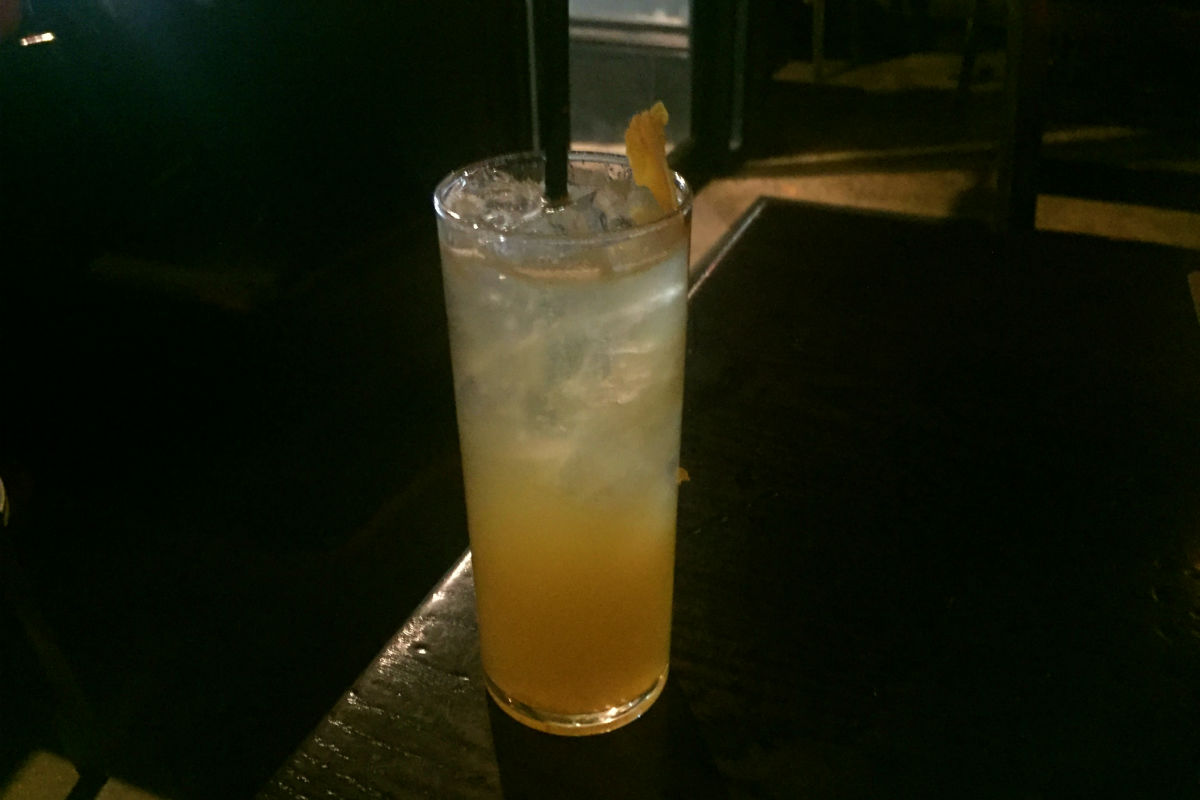
When Kevin Mabry was tasked with creating the opening cocktail menu for JM Curley in 2011, he took a deep dive into the origins of the simple Gin and Tonic.
“A Gin and Tonic is greater than the sum of its parts,” says Mabry. “I started diving into the history of tonic, and which gins paired with which tonics.”
As a nod to old British naval routes, Mabry selected Plymouth Gin as his spirit. He wanted to create his own tonic, and began experimenting with tonic syrups. But he found that the syrups fell flat over time, and tonic water proved to be too challenging to make in house.
Eventually, Mabry found his solution. By combining citrus juices, simple syrup, and a small amount of cinchona bark powder, he was able to create a tonic syrup that could be shaken to order. A splash of soda added the final element of carbonation, and Yellow Chartreuse delivered some extra herbal flavor.
The fruits of his labor became the 21 Temple, named for the bar’s street address. The drink has been a fan favorite at JM Curley, which Mabry departed in 2015, ever since.
“I’ve always joked that this was going to be the drink that goes on my gravestone,” says Mabry.
21 Temple Recipe
1.5 oz Plymouth Gin
0.5 oz Yellow Chartreuse
0.5 oz lemon juice
0.5 oz lime juice
0.75 oz simple syrup
0.25 tsp cinchona bark powder
Add all ingredients to a cocktail shaker with ice and shake until chilled. Strain into a highball glass. Top with soda, garnish with orange rind and serve.
Roscoe Pound, The Hawthorne (2011)
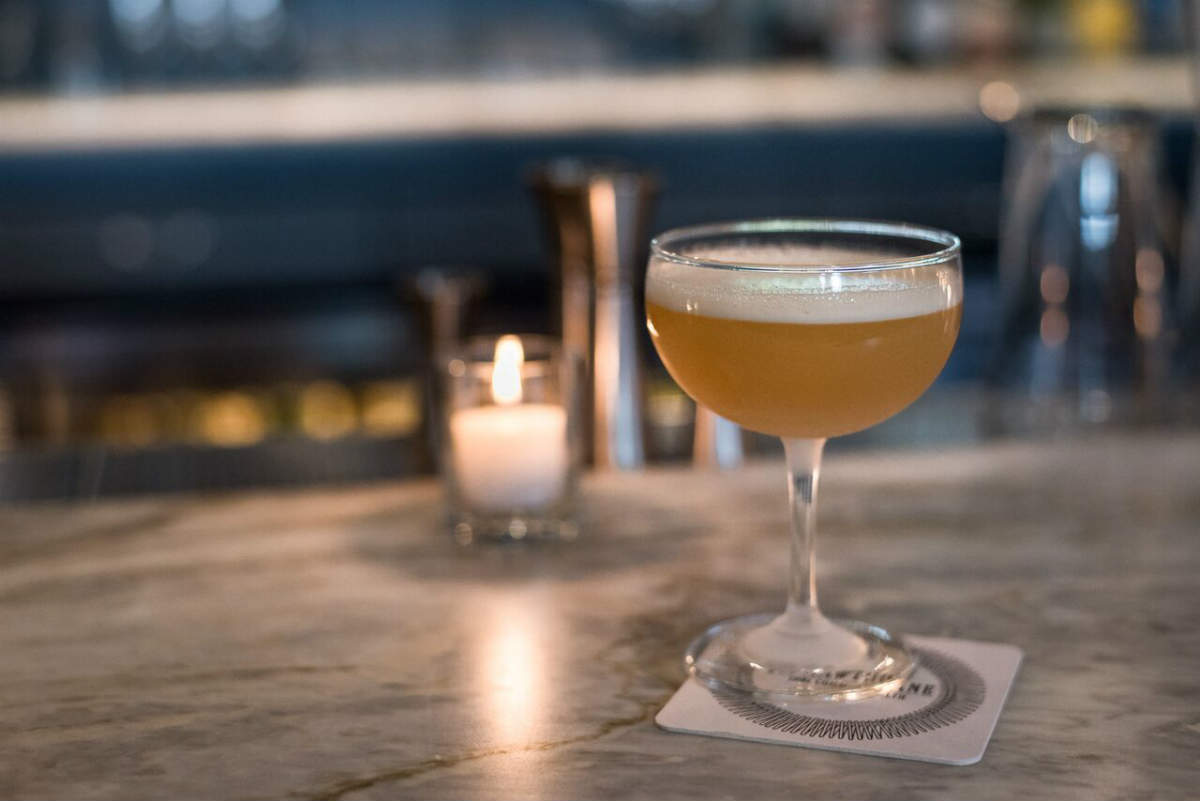
Roscoe Pound, who served as Dean of Harvard Law School between 1916 and 1936, was by all accounts a bookish, literary man. So it’s fitting that the Bourbon Sour that bears his name is a strong, spiced drink that lends itself to lingering conversation and long contemplation.
The drink was created by Jackson Cannon, and appeared on the Hawthorne’s opening menu in 2011. It’s remained popular ever since.
“It’s a bright, refreshing Bourbon Sour that works particularly well in the wintertime,” says Hawthorne bar manager Jared Sadoian. “But even in the summertime, we sell tons of them every night.”
It’s not hard to see why it’s become a Hawthorne staple. The addition of lemon juice and fresh ginger and honey syrups make it less spirit-forward than Manhattans or Old-Fashioneds. Yet it avoids the cloying quality that plagues so many other sours.
“In this case, we use fresh ginger, and that heavy spice really offsets whatever sugar is being used to flavor the drink,” Sadoian says.
The drink also receives extra backbone from its use of W.L. Weller Special Reserve, a 90-proof, wheated bourbon produced by the Buffalo Trace Distillery.
“It allows that flavor of the spirit to carry through, even if you’re using a lot of other really strong flavors like honey or ginger,” says Sadoian.
Roscoe Pound Recipe
2 oz W.L. Weller Special Reserve Bourbon
0.75 oz fresh lemon juice
0.75 oz split of ginger syrup* and honey syrup**
Add all ingredients to a shaker with ice and shake hard until chilled. Strain into a coupe.
*Ginger Syrup
1 part fresh-juiced ginger
1 part sugar
Add juiced ginger to a sealed container. Add sealed container to a hot water bath (make sure that hot water does not enter the container), and slowly add the sugar. Let sit until ginger and sugar have combined.
**Honey Syrup
1 part honey
1 part hot water
Combine honey and hot water, and stir until mixture is dissolved.
Ward 8, Ward 8 (2013)
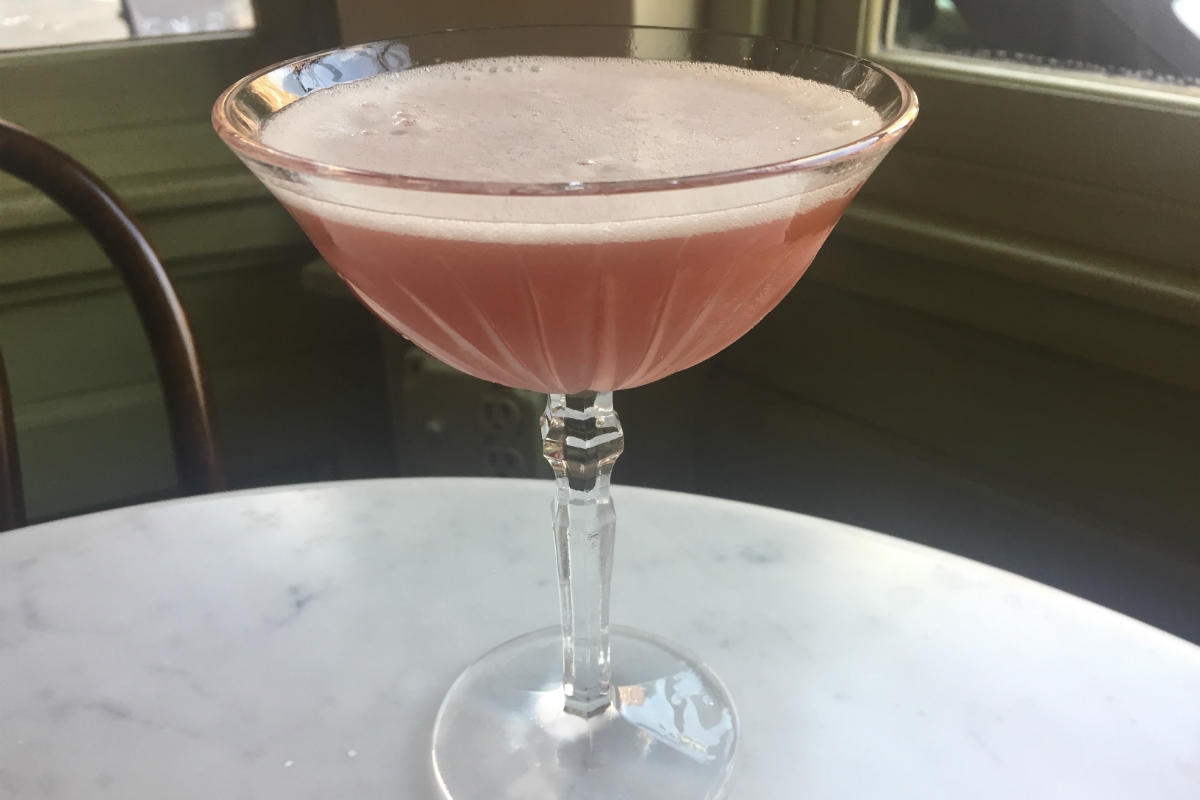
Invented in 1898 at the legendary Locke-Ober restaurant, many consider the Ward 8 to be Boston’s definitive cocktail.
Appropriately, the bar Ward 8 serves a modern rendition of its namesake drink. Since first opening in 2013, the Ward 8 has been the first cocktail on its menu.
However, it’s not a straight homage to the original. The bar has taken some liberties to bring the cocktail into the 21st century.
“If you look at the classic proportions from a Mr. Boston or another old-school cocktail book, there’s usually just a teaspoon of grenadine,” says beverage director Mike Wyatt. “It’s very booze forward.”
The bar stays true to the drink’s spirit—rye whiskey—but dials back its volume while adding more housemade grenadine.
“We try to balance it a little more proportionally, the tart and the sweet. It’s more approachable, but still true to the classic,” Wyatt says.
Ward 8 Recipe
1.5 oz Old Overholt Rye Whiskey
0.5 oz housemade grenadine*
0.5 oz fresh orange juice
0.5 oz fresh lemon juice
Add all ingredients to a cocktail shaker with ice and shake until chilled. Strain into a cocktail glass.
*Housemade grenadine
2 parts pomegranate juice
1 part sugar
2-3 dashes orange blossom water
Combine pomegranate juice and sugar in saucepan and simmer for half an hour, or until ingredients are well combined.
Allow mixture to cool, then finish by adding the orange blossom water.
The Oracle, The Baldwin & Sons Trading Co. (2015)
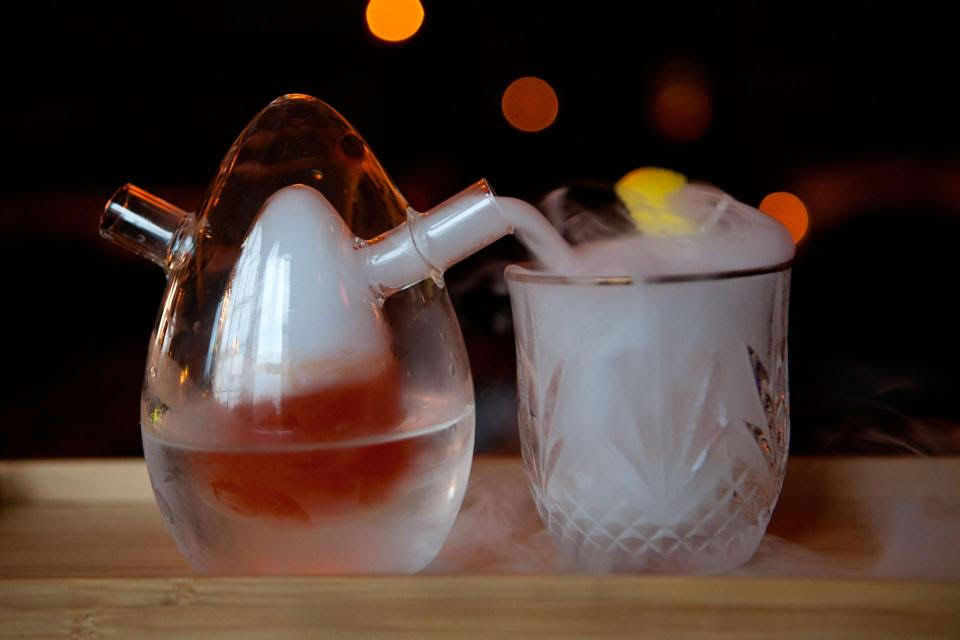
Photo: Kayana Szymczak
The Oracle was born out of an earlier drink, The Elixir de Vie, which was first served at The Baldwin Bar in 2013. That popular drink was a sort of Gin Old-Fashioned, made with falernum, rosewater, and a mix of gins.
When Ran Duan opened The Baldwin & Sons Trading Co. above his original bar in 2015, the Elixir de Vie made a phoenix-like return in a new form. There were no ashes, but there was smoke.
Its second coming, dubbed The Oracle, was a two-part drink that showcased Duan’s creativity. It is made using two different cruet chambers (the exact model used can be purchased on Amazon). One chamber houses the drink itself, and the other contains a powerful aromatic mix with a dry ice smoke show.
The drink itself remains similar to its forbearer, but gets kicked up with absinthe, St-Germain, and the interesting addition of citric acid, which acts as a citrus substitute.
But the aspect drinkers may remember most is its presentation. It’s served with an aromatic mix that diffuses the herbal scent of ylang ylang oil while releasing a dramatic amount of smoke.
“It was always one of those very obvious, dramatic showstoppers,” says bar manager Patrick Orlovsky. “People turned their heads when they saw bartenders walking it to tables with a tray and this weird, smoking vessel.”
When it first appeared on the menu, Orlovksy recalls the bar making 40 to 50 of the drinks per night. The demand might not be as crazy since it’s left the menu, but it continues to draw gawkers and connoisseurs alike.
“It’s become a cult classic within our bar,” Orlovsky says.
The Oracle Recipe
2 oz gin
0.5 oz falernum
0.5 oz St-Germain
1 oz water
3 dashes absinthe
8 drops of 33% by weight citric acid
Aromatic mix*
Add ingredients to a cocktail tin and stir with ice until chilled. Strain into the larger cruet chamber. After adding aromatic mix (below) pour drink from cruet into Old-Fashioned glass. Garnish with a lemon peel.
*Aromatic Mix
2 dashes Angostura Bitters
4 drops ylang ylang oil
2 pellets dry ice
Hot water
Combine aromatic mix ingredients in the smaller cruet chamber. Add hot water to activate.
